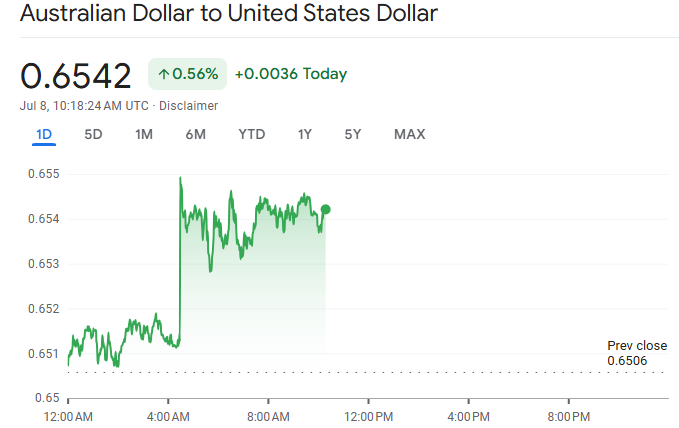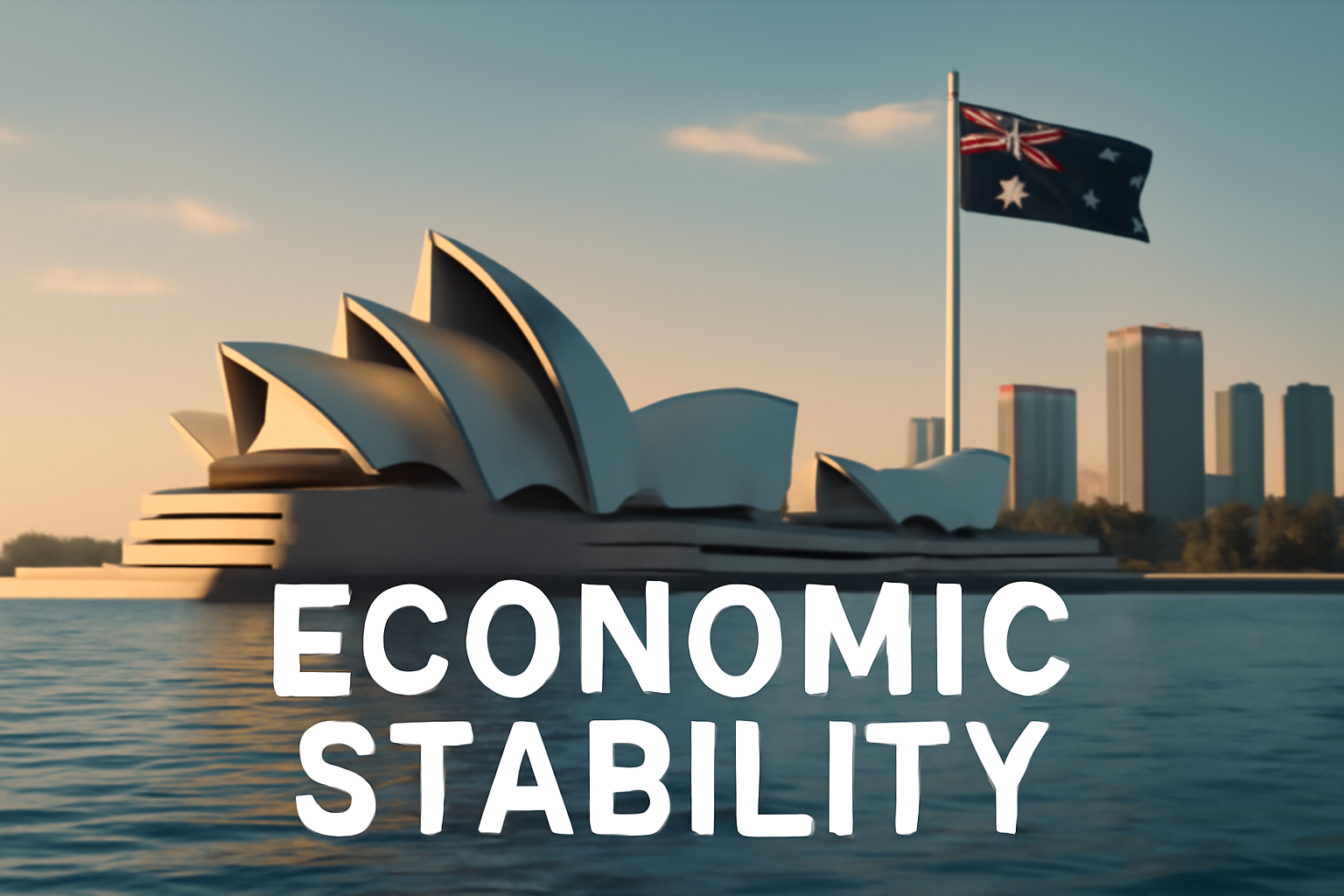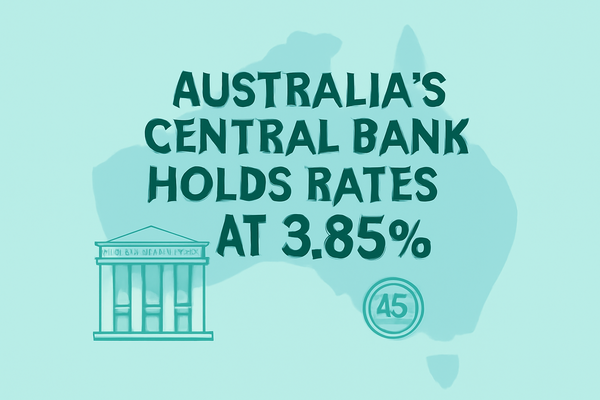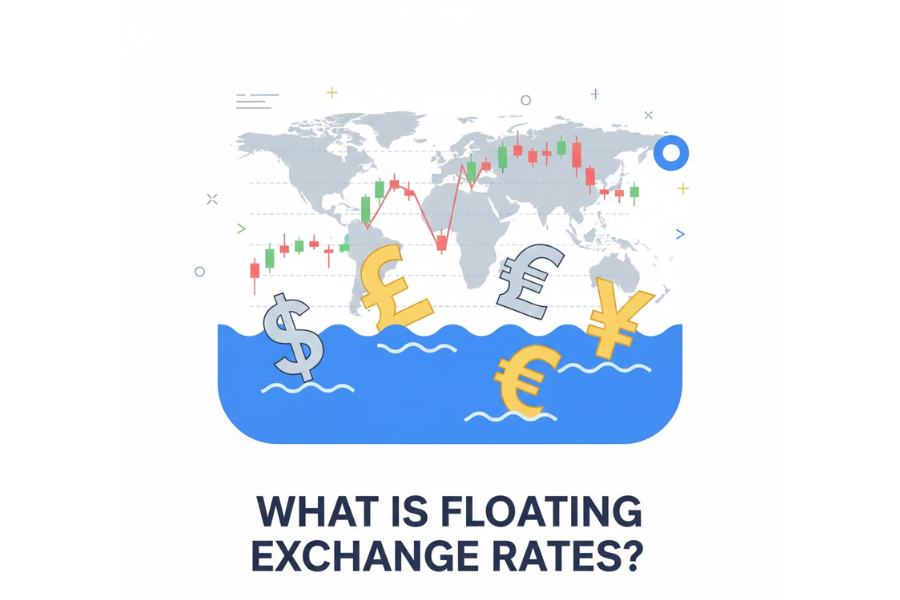Australia's financial landscape was stirred on 8 July 2025 as the Reserve Bank of Australia (RBA) made the unexpected decision to maintain interest rates at 3.85%. This move, contrary to market expectations of a potential cut, has sent ripples through the Asia-Pacific markets and influenced the Australian dollar's trajectory.
As global trade uncertainties and domestic inflation concerns linger, the RBA's cautious stance has become a focal point for investors and analysts alike.
Australia's Central Bank Stands Firm at 3.85%

The Reserve Bank of Australia caught markets off guard by opting to keep its cash rate steady at 3.85% during its latest policy meeting. Many economists had anticipated a rate cut, given the softening economic growth signals and declining consumer prices, which hit a three-and-a-half-year low in May. However, the RBA's decision reflects a prudent approach, prioritising stability amid persistent inflation pressures and global trade tensions.
The announcement, made on 8 July 2025, led to an immediate reaction in currency markets, with the Australian dollar (AUD) rising against major peers. The AUD/USD pair climbed to around 0.6580, up approximately 0.3% on the day, as investors reassessed the likelihood of future rate adjustments.
This decision underscores the RBA's focus on balancing economic growth with inflationary risks, particularly in light of recent tariff developments affecting Australia's export-driven economy.
Economic Context Behind the Rate Hold
Inflation and Domestic Economic Indicators
Australia's inflation rate, while easing, remains a concern for policymakers. The Consumer Price Index (CPI) for May 2025 showed a year-on-year increase of 2.8%, down from previous highs but still above the RBA's target range of 2-3%.
This persistent inflationary pressure, coupled with sluggish wage growth, has created a challenging environment for the central bank. Retail sales data also indicated a slowdown, with a month-on-month increase of just 0.1% in May, reflecting cautious consumer spending.
Additionally, the RBA is closely monitoring housing market dynamics. Property prices in major cities like Sydney and Melbourne have shown signs of cooling, with a quarterly decline of 0.5% in Q2 2025. A rate cut could have potentially reignited housing demand and inflation, a risk the RBA appears unwilling to take at this juncture.
Global Trade Uncertainties
The global trade landscape has added another layer of complexity to the RBA's decision-making process. With U.S. President Donald Trump's recent tariff announcements targeting multiple countries, including key Australian trading partners, the potential for disrupted export markets looms large.
Australia, heavily reliant on commodity exports such as iron ore and coal, faces heightened risks if trade tensions escalate further. Iron ore prices, for instance, remained stable at $95.25 per metric ton on the Singapore Exchange as of 8 July 2025, but a mere 4% drop in China's seaborne imports in the first half of the year signals demand concerns.
The RBA's statement accompanying the rate decision highlighted these external risks, noting that “global economic uncertainties, particularly around trade policies, warrant a cautious monetary stance.” This perspective aligns with the central bank's decision to hold rates, preserving flexibility to respond to potential economic downturns triggered by international developments.
Market Reactions and Currency Impact

The immediate aftermath of the RBA's announcement saw a strengthening of the Australian dollar. The AUD appreciated against the U.S. dollar, moving from 0.6532 to 0.6542 within hours of the decision. This uptick reflects market repricing of rate cut expectations, with the probability of a cut in the next meeting dropping from 60% to around 40%, according to futures data.
Australian equity markets, however, exhibited a muted response. The S&P/ASX 200 index edged up by 0.1% to 8,609.50, supported by gains in mining and energy sectors but tempered by broader regional caution. Investors in the Asia-Pacific region remain on edge, with mixed performances across indices like Japan's Nikkei 225 and India's Sensex, as tariff-related uncertainties continue to dominate sentiment.
Implications for Asia-Pacific Markets
The RBA's decision to hold rates at 3.85% has broader implications for the Asia-Pacific region, where central banks are navigating similar challenges of inflation control and trade disruptions. The stability in Australian monetary policy contrasts with expectations of easing in other economies, potentially positioning the AUD as a relative safe haven among regional currencies.
In the context of global trade tensions, Australia's stance may influence other export-driven economies to adopt similarly cautious approaches. The RBA's focus on maintaining policy flexibility could set a precedent for central banks in South Korea and Japan, where trade exposure to U.S. policy shifts is equally significant.
Analyst Perspectives and Future Outlook
Analysts have offered varied interpretations of the RBA's latest move. Some view the rate hold as a signal of confidence in Australia's economic resilience, while others caution that it may delay necessary stimulus if global conditions deteriorate. A senior economist at a leading Australian bank noted, “The RBA is playing a waiting game, prioritising data over preemptive action. However, with trade risks mounting, a cut may still be on the horizon before year-end.”
Looking ahead, key data releases will shape the RBA's future decisions. The upcoming quarterly GDP figures, expected to show growth of around 0.3% for Q2 2025, will provide critical insight into economic momentum. Additionally, inflation data for June, due later this month, will be pivotal in determining whether the RBA maintains its current stance or shifts towards easing.
Market participants are also eyeing global developments, particularly the U.S. tariff implementation deadline now set for 1 August 2025. Any escalation or resolution in trade negotiations could significantly impact Australia's export outlook and, by extension, the RBA's policy path. The central bank's next meeting in August will be closely watched for indications of whether the rate hold at 3.85% marks a longer-term pause or a temporary reprieve.
Broader Economic Considerations

Beyond immediate market reactions, the RBA's decision has implications for various sectors of the Australian economy. Small businesses and households, already grappling with cost-of-living pressures, may face continued challenges without the relief of lower borrowing costs. Conversely, savers and fixed-income investors benefit from sustained interest rates, preserving returns on deposits and bonds.
The property sector, a significant driver of Australian economic activity, remains in a delicate balance. While a rate hold prevents further stimulation of housing demand, it also avoids exacerbating affordability issues for first-time buyers. The RBA's cautious approach thus reflects a broader strategy of maintaining economic stability across multiple fronts.
Conclusion
The Reserve Bank of Australia's decision to hold interest rates at 3.85% on 8 July 2025 has reaffirmed its commitment to a cautious monetary policy amid domestic and global uncertainties. With inflation still above target, a cooling housing market, and looming trade risks, the RBA has opted for stability over stimulus, influencing both currency and equity markets in the process.
As investors and analysts look to upcoming economic data and international developments, the central bank's next moves will be critical in shaping Australia's financial landscape for the remainder of 2025.
Disclaimer: This material is for general information purposes only and is not intended as (and should not be considered to be) financial, investment or other advice on which reliance should be placed. No opinion given in the material constitutes a recommendation by EBC or the author that any particular investment, security, transaction or investment strategy is suitable for any specific person.




























